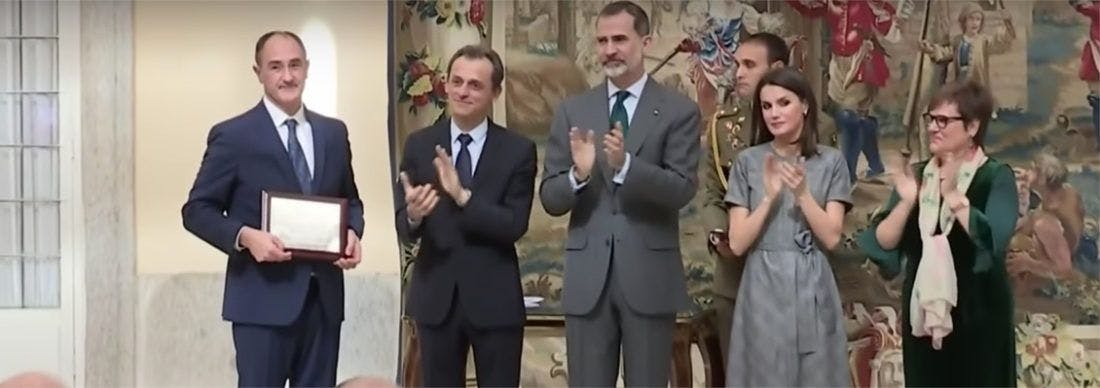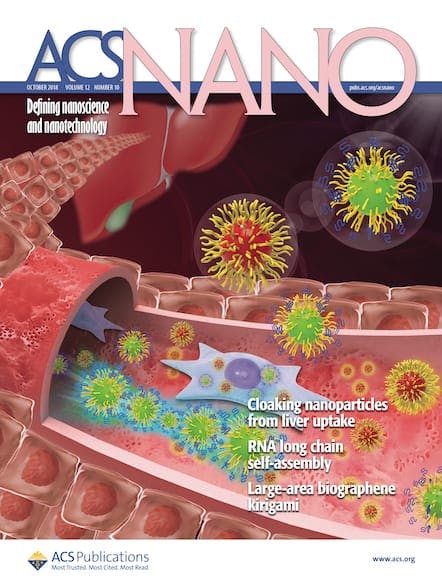ACS Nano Associate Editor Professor Luis M. Liz-Marzán is the winner of the Spanish National Research Award “Enrique Moles” in Chemical Science and Technology. He received the award from King Felipe VI and Queen Letizia during a ceremony on February 21, 2019. In awarding him the prize, the jury emphasized his work expanding the frontiers […]

ACS Nano Associate Editor Professor Luis M. Liz-Marzán is the winner of the Spanish National Research Award “Enrique Moles” in Chemical Science and Technology. He received the award from King Felipe VI and Queen Letizia during a ceremony on February 21, 2019. In awarding him the prize, the jury emphasized his work expanding the frontiers of nanotechnology, especially in the biomedical field. ACS Publications congratulates him on his achievement.
Professor Liz-Marzán is the Scientific Director of CIC biomaGUNE, San Sebastián, Spain and serves as the Ikerbasque Research Professor. His research focuses on the synthesis, properties, and applications of plasmonic metal nanoparticles and assemblies, as well as the control of nanomaterials in one, two, and three dimensions. He was the inaugural ACS Nano award lecturer for Europe, Africa, and the Middle East and has been an active author and member of our editorial advisory board. He was previously a senior editor at Langmuir and a founding co-editor at ACS Omega, before joining the editorial board of ACS Nano this year.
His research focuses on the synthesis, characterization, and applications of nanoparticles and their assemblies. His achievements in synthesizing gold and silver nanoparticles of different shapes and morphologies helped give rise to the research field of nanoplasmonics.
“I started as a colloid chemist who was attracted by the excitement of nanoscience, in terms of the synthesis of monodisperse metal nanoparticles and characterization of their optical (plasmonic) properties,” he says. “I soon realized that these systems and their properties could become much more interesting if we were able to develop methods to tailor the surface chemistry of nanoparticles and thereby driving their assembly in one, two and three dimensions. We are currently finding applications for these exciting materials, mainly in surface enhanced spectroscopies, nanoparticle-based sensing and diagnostic tools.”
Read a Recent Featured Paper from Professor Luis M. Liz-Marzán
Gold Nanoparticle Plasmonic Superlattices as Surface-Enhanced Raman Spectroscopy Substrates
ACS Nano, 2018, 12 (8), pp 8531–8539
DOI: 10.1021/acsnano.8b04073
